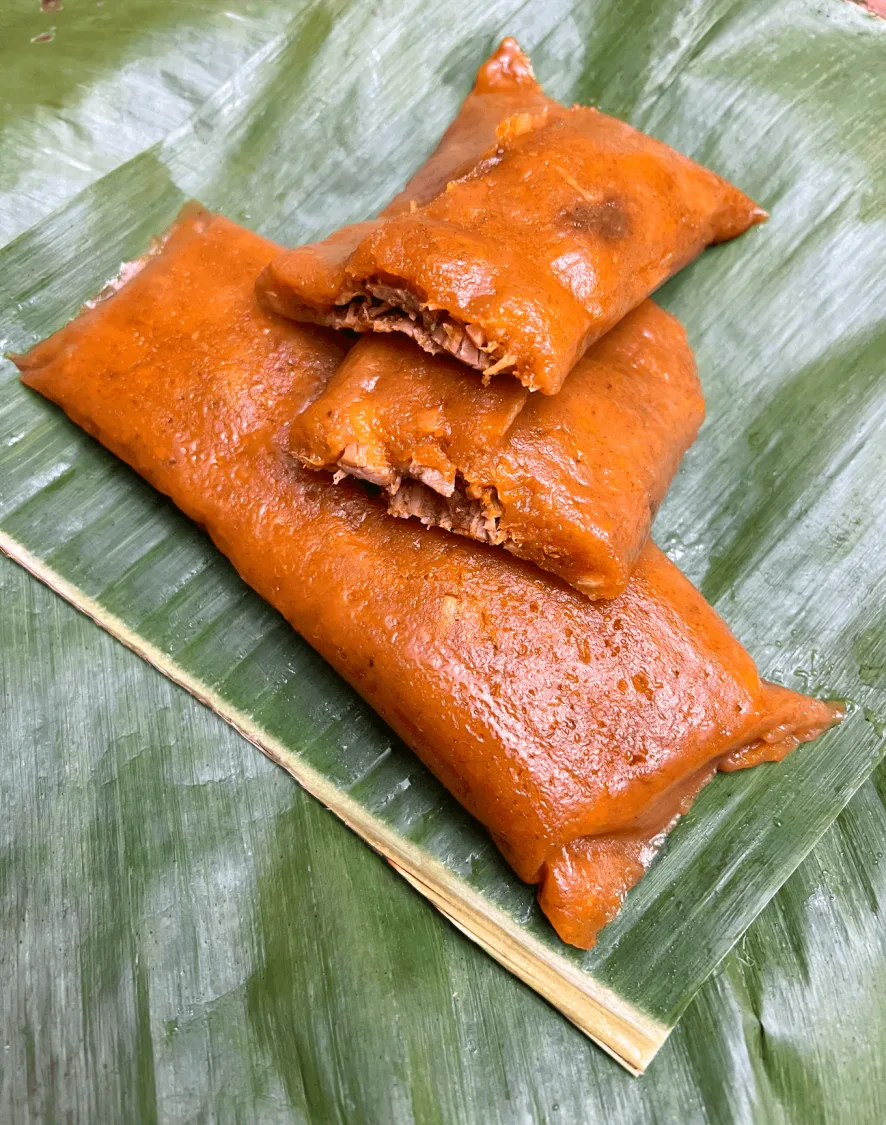
Pasteles
Traditional Puerto Rican tamales made with green banana and root vegetable masa, filled with pork.
Ingredients
- •Green bananas
- •Yautia
- •Plantains
- •Pork
- •Achiote oil
- •Banana leaves
- •Sofrito
Instructions
Make Masa
Grate green bananas and root vegetables for masa
Prepare Filling
Cook seasoned pork filling
Assemble
Wrap masa and filling in banana leaves
Pasteles are a beloved Puerto Rican holiday dish that showcases the island's unique culinary heritage. Similar to tamales but distinctly different, pasteles are made with a masa (dough) of green bananas, plantains, and tropical root vegetables like yautía, rather than corn. This masa is filled with savory seasoned pork, wrapped in banana leaves, and boiled to perfection.
The history of pasteles dates back to the indigenous Taíno people, who used similar root vegetables in their cooking. The dish evolved through Spanish and African influences, particularly in the use of banana leaves as wrappers and the addition of achiote oil for color and flavor. Making pasteles became a cherished Christmas tradition, with families gathering for pasteles-making parties called "pasteles-making marathons" where multiple generations work together to prepare large batches.
Creating pasteles is a labor-intensive process that requires skill and patience. The masa preparation involves grating green bananas and root vegetables, then seasoning the mixture with achiote oil and spices. The filling traditionally consists of pork marinated in sofrito, though some versions use chicken or seafood. The wrapping technique is crucial - the masa and filling are carefully arranged on banana leaves, folded into neat rectangles, and tied with string before boiling.
While the traditional pork filling remains most popular, modern variations include chicken, crab, or even vegetarian versions with chickpeas or vegetables. Some cooks add olives, capers, or raisins to the filling for extra flavor. The masa can also be customized by adjusting the ratio of different root vegetables or adding calabaza (Caribbean pumpkin) for sweetness.
In Puerto Rico, pasteles are most commonly served during the Christmas season, often alongside arroz con gandules and pernil. They're typically garnished with hot sauce or ketchup and are a staple at holiday gatherings. Many families make large batches and freeze them, ensuring they have these special treats available throughout the holiday season.
From a nutritional perspective, pasteles offer some unique benefits. The root vegetable masa is naturally gluten-free and provides complex carbohydrates, fiber, and various vitamins and minerals. A single pastel contains approximately 250-300 calories, depending on the filling. However, they can be high in sodium due to the seasoned filling, and the traditional pork version is relatively high in fat. Those with banana allergies should be cautious, and vegetarians should ensure their pasteles are made without lard, which is sometimes used in traditional recipes.
